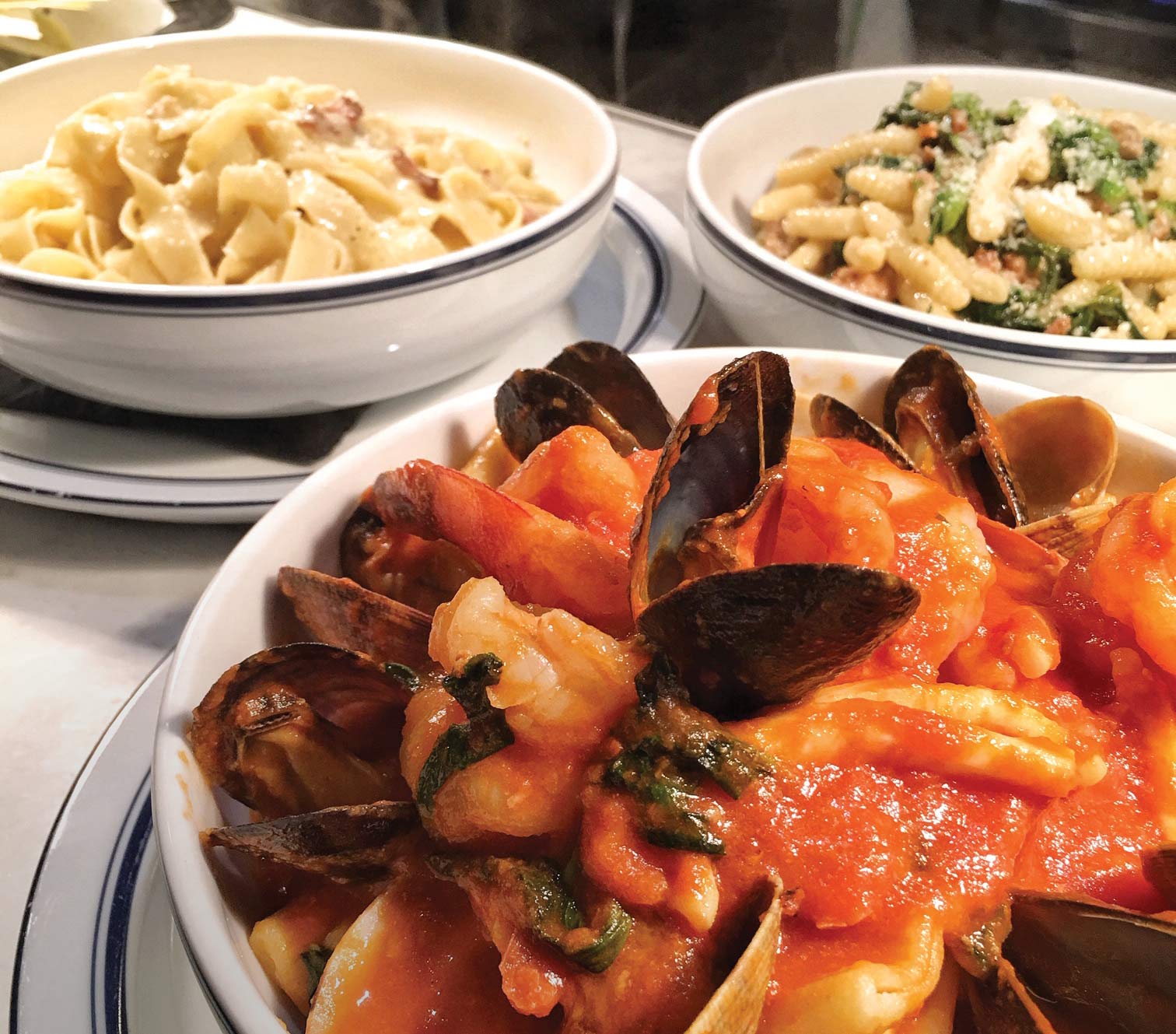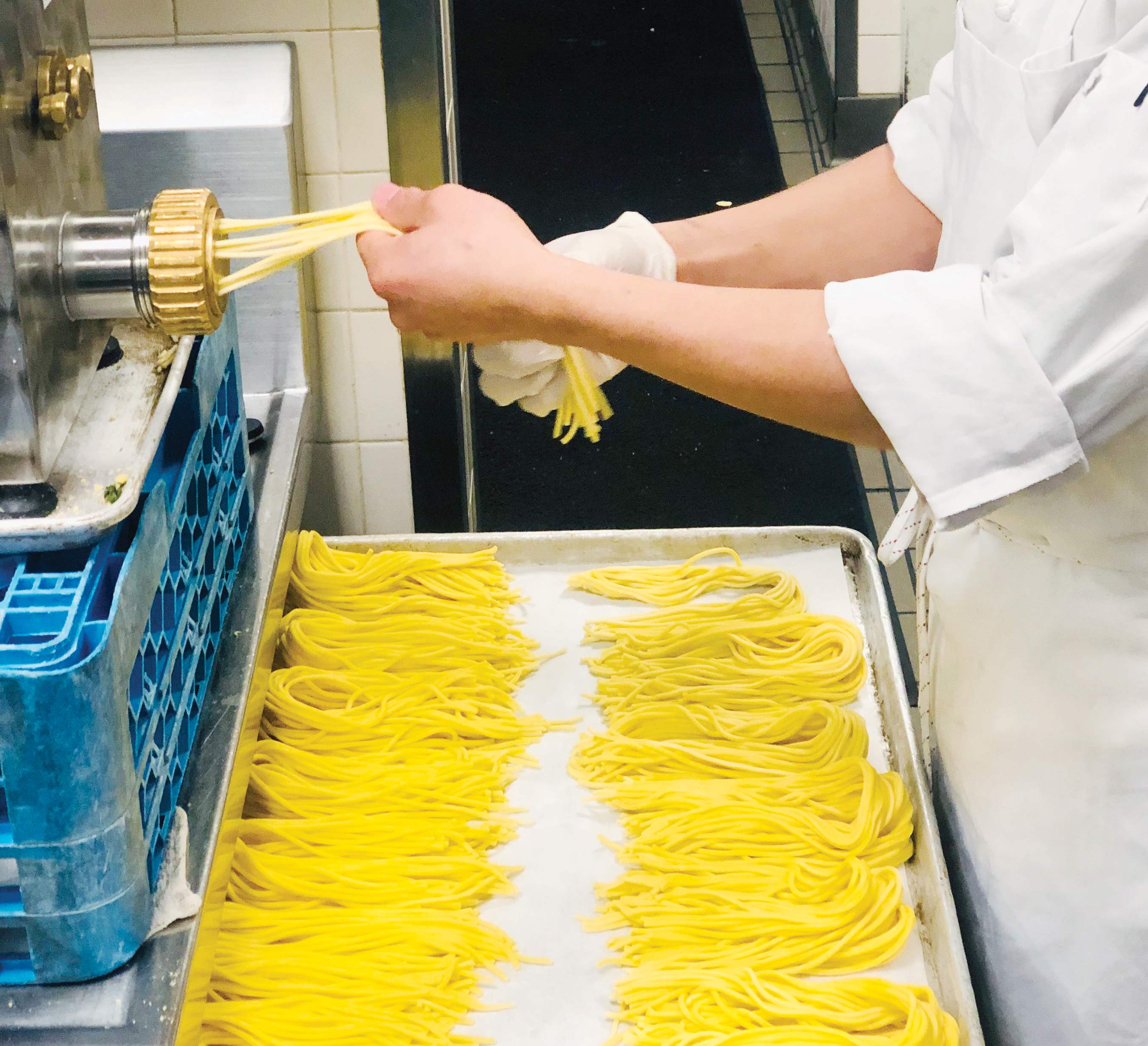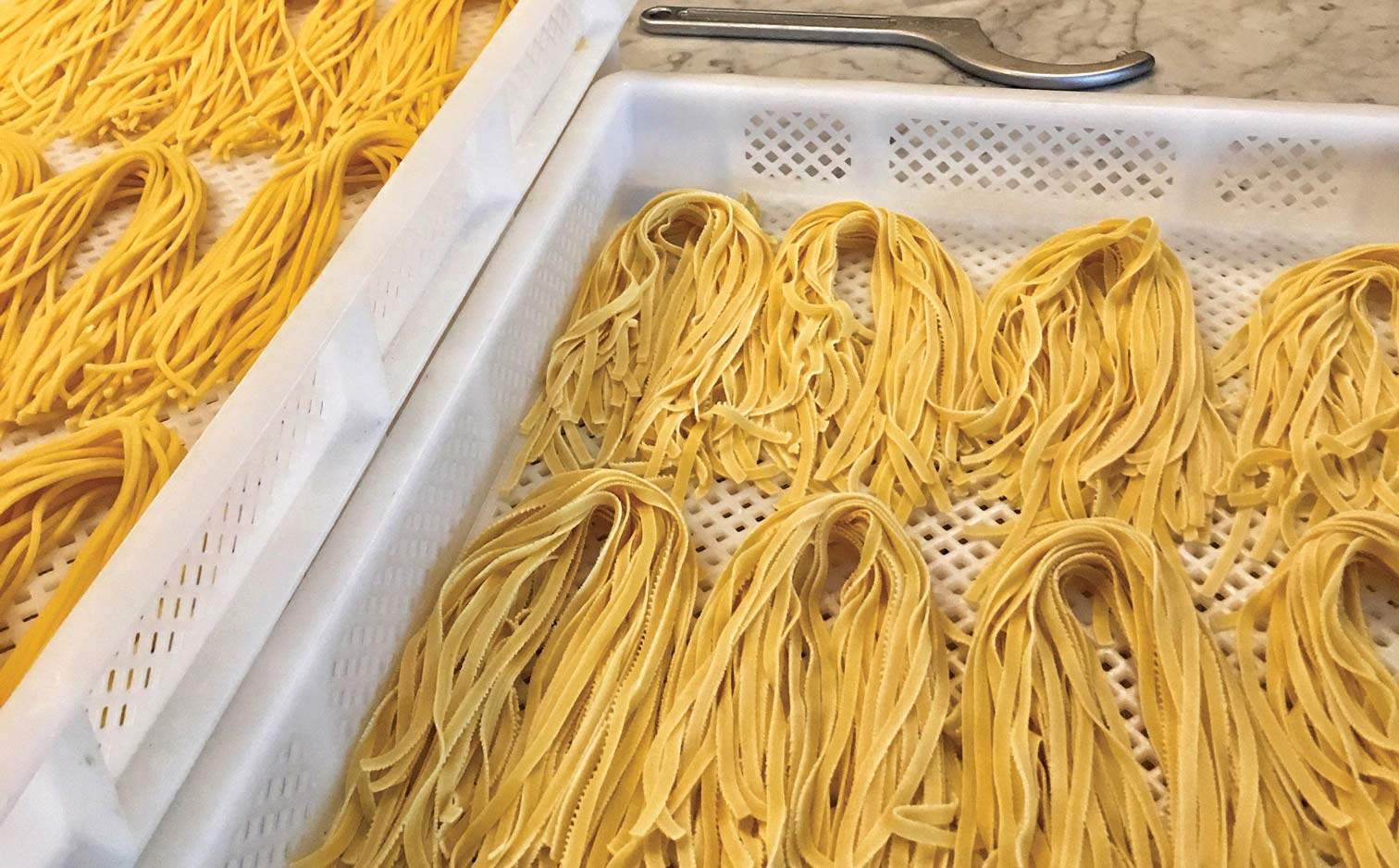Why making pasta in-house is often the go-to choice at restaurants—and
what’s on the menu for spring.
Peek into almost any home pantry and you’re sure to spot a box—or 10—of pasta. It’s an easy go-to, kids don’t often object to it, and it can be on the table fast, making everyone happy. On the flip side, though, what about those nights when you’re
heading out to dinner and are craving pasta? That’s when the homemade version takes the proverbial cake.
“There are some great store-bought pastas and when I am home I tend to use them more than make [my own],” says Nick Martschenko, chef/owner of South End Restaurant Group, which includes South End in New Canaan, CT, “but when you go to a restaurant I feel like you should be making the pasta there—and if we are making fresh pasta, we use it that day.”
And diners are taking notice when homemade pasta is on the menu. “Guests today are more knowledgeable about food in general, so they’re going into a restaurant with higher expectations,” says Jonas Daniela, head chef at Amis Trattoria in Westport, CT. “They not only want freshly-made food, but they also want to know where their food is coming from and how it got to the table. Making pasta fresh elevates the dishes you’re
serving and answers the high demands of our well-informed customers.”

GOING FRESH
Let’s start from scratch: What’s the difference between the pasta you can snag on the shelf at any supermarket and its homemade counterpart? “Homemade pastas are made fresh with eggs, while store-bought are usually not—and homemade pastas cook in a couple of minutes, while store-bought can take 10 to 15 minutes,” explains Daniela. The flavor profile is another big difference, he says. “The softness of the homemade pasta absorbs its accompanying sauce more so than store-bought.” He adds that Roman cooking calls for using the freshest ingredients, “and we find that making our own pasta keeps true to our ethos as a brand at Amis.”
Paul Russo, co-owner of TVB by: Pax Romana in White Plains, NY, explains it this way: “The difference between housemade and store-bought is found in the quality, texture and ‘bite’ that pasta is supposed to have,” he says. “For a mass market, there is nothing wrong with store-bought pasta. It’s easily accessible and can still be enjoyed by anyone. But because this is what we dedicated our lives to, we want people to enjoy pasta on an elevated level, resembling the way Italians eat in Italy.”

MAKING THE MENU
Along with the differences in ingredients and flavor, there are other reasons chefs choose to make their pasta themselves—even when their offerings aren’t strictly Italian.
“We typically have four to five pastas on the menu at a time, but I would not consider us an Italian restaurant,” says Martschenko of South End (he also owns South End UNCORKED in New Canaan). Along with the fresh and dried pasta being homemade, most everything else in the restaurant is as well, down to the ketchup. “The main reason we do this is it gives us flexibility and control of the product, as well as an option of variety,” he explains.
It’s similar for Daniela, who says that in addition to being popular with customers, pasta made in-house allows chefs to be more creative and infuse their dishes with a variety of ingredients. Plus, he adds, “It also simply elevates the dish you’re serving.”
Russo lists quality and cost control as two of the reasons they go the homemade route at TVB, but tradition also comes into play. “This is the way we grew up in our homes, with our families, [with] pasta being made by our grandmothers and mothers, the smell of cooking and the tradition behind it all. This is the premise on which our business is built; to keep a dying tradition alive,” he explains.
And at TVB, they go even further: There’s a pasta bar in their dining room, where diners can see the pasta being rolled out and cut right in front of them. “Absolutely 100 percent of the pasta made by us is done at this pasta bar and creates a unique experience for our guests,” says Russo. “The visual of pasta being made gives you reassurance of our honesty in saying ‘homemade,’ while also giving you a look into a world that many do not or did not get to experience. For others, [we’re] also bringing back memories of family traditions that they no longer get to enjoy.”
IN FOR SPRING
This spring on menus throughout Fairfield and Westchester counties, there are a slew of choices, often filled with veggies and other delicious in-season options.
“One dish that we are looking forward to bringing back for spring is our fusilli pasta [with] ricotta salata, broccolo romanesco (roman broccoli) and red onion,” says Russo. For Martschenko, ramps are a go-to, with one of his favorite choices for spring a cacio e pepe-style dish that features chitarra, a type of square spaghetti, with braised ramps and morel mushrooms.
And looking ahead to the warmer months, Daniela offers up this option: “One of our favorite summer pastas on deck for this year is our charred scallion and corn fettuccine. It will hit menus in early summer and uses the seasonal ingredients that make the flavors of the dish really pop!”




